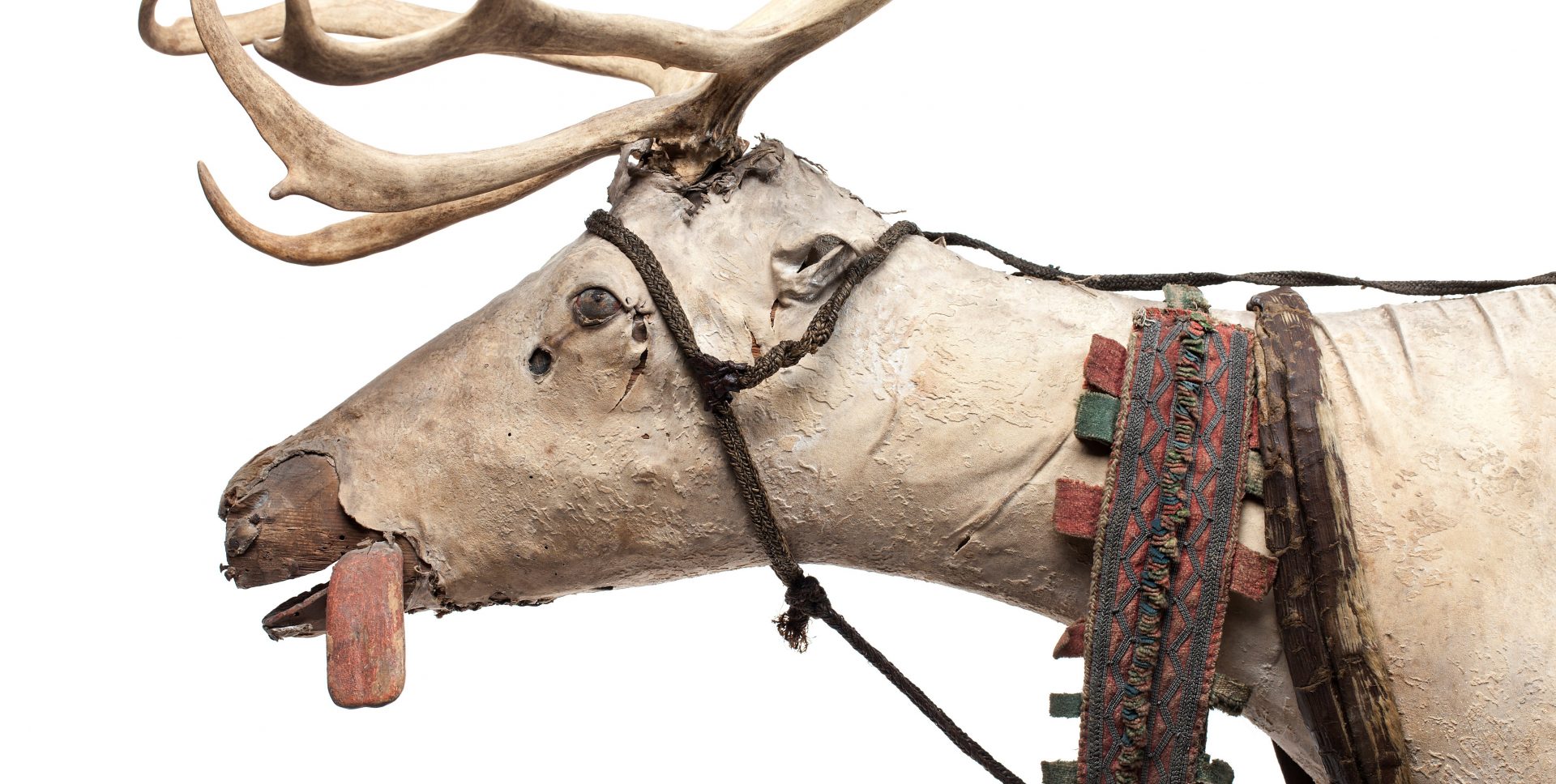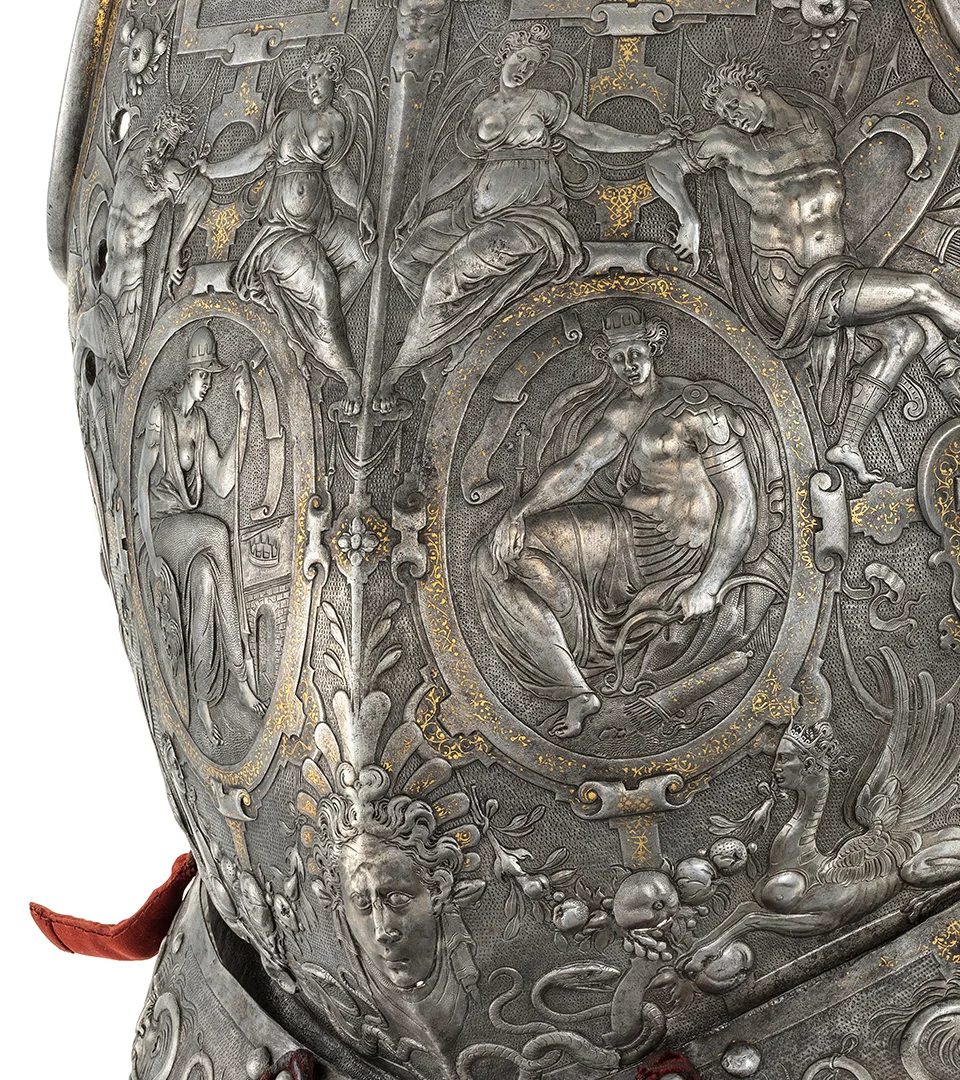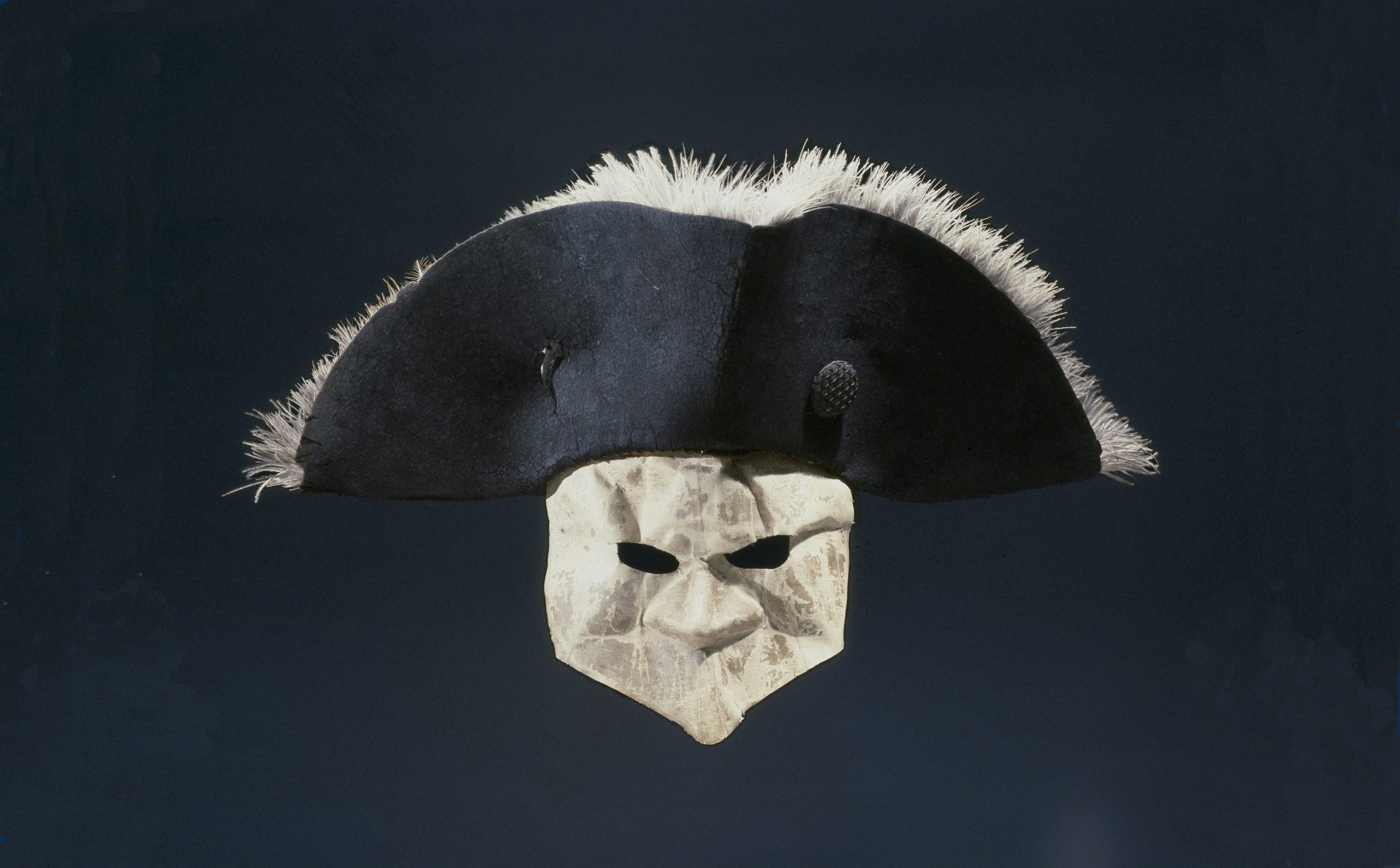
Gustav III’s masquerade costume
Masquerade balls were a regular event at court. When Gustav III’s Opera House was completed in 1782, it became common to hold masquerade balls there. The masquerade at the Opera was open to the public for an entrance fee. Participants most often covered themselves with a simple mask made of wax cloth, like the King’s mask, and a silk cap.
Behind their masks, those present were emboldened to talk to each other more freely. For the King, the masquerade balls could serve as opportunities to join in the public discourse.
Many rumours and murder plots had been circulating in the years before the shot was fired at the King that night in March. Gustav III was not popular among the nobility. The King had made himself an autocratic ruler through a coup in 1772. The nobility no longer had as much influence in the running of the country.
A group of disgruntled noblemen and officers joined forces to carry out an attack and do away with the King. Captain Jacob Johan Ankarström declared himself willing to perform the deed.
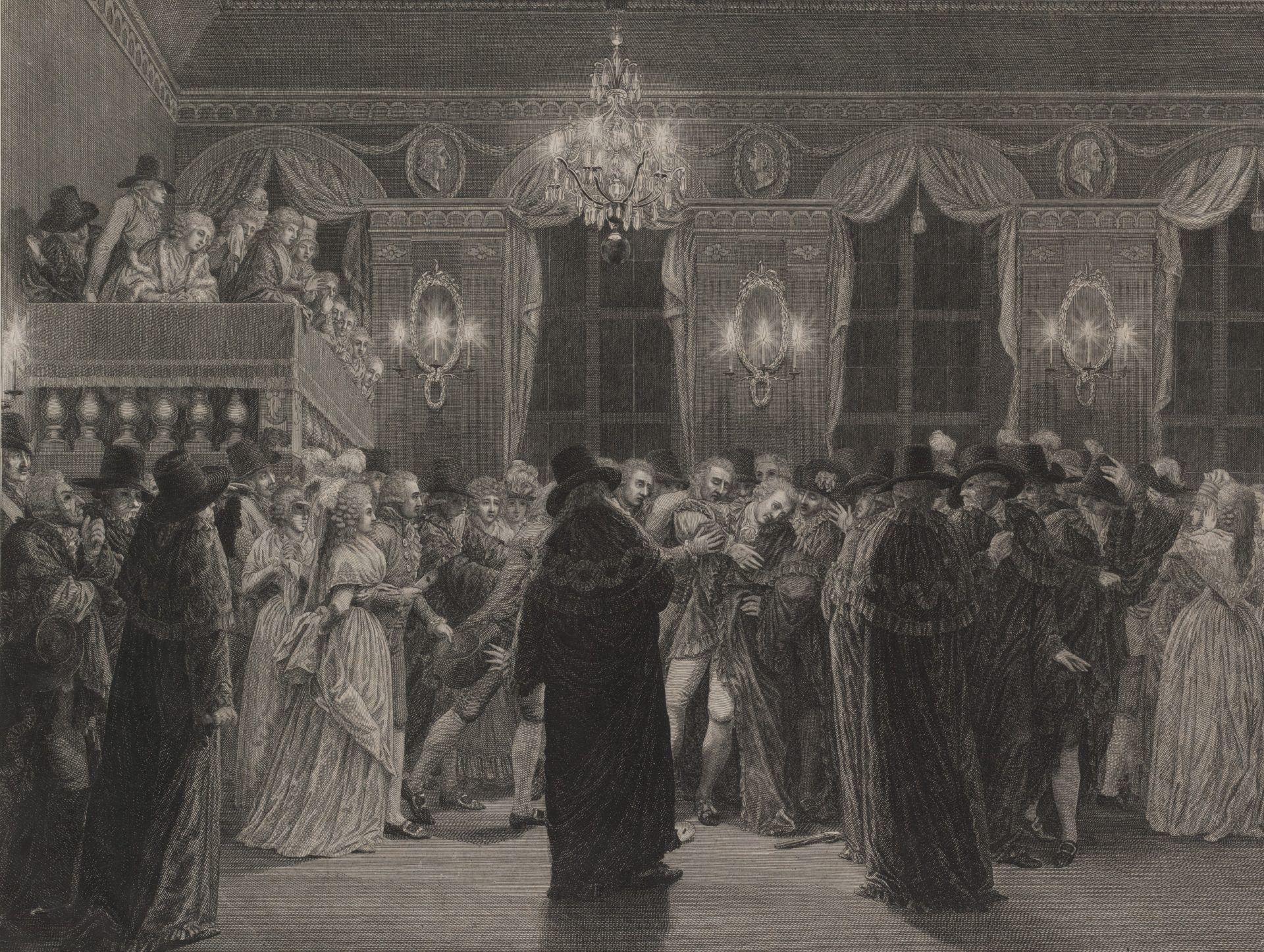
Masquerade costume with the bullet hole
The clothes worn by the King at the masquerade were taken to the murder investigators’ hearing at the Svea Court of Appeal. The impact of the shot could be tracked garment by garment, and the clothes were examined very carefully. After the investigation, the clothes were taken to the Royal Armoury, which has had them on display since 1851.
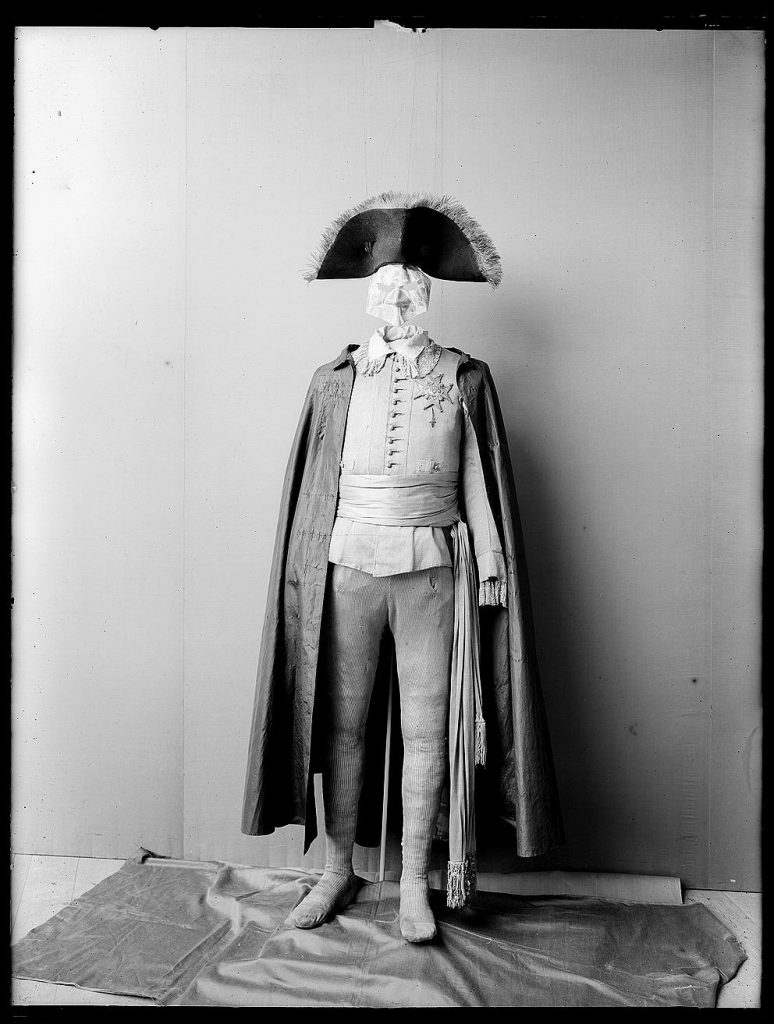
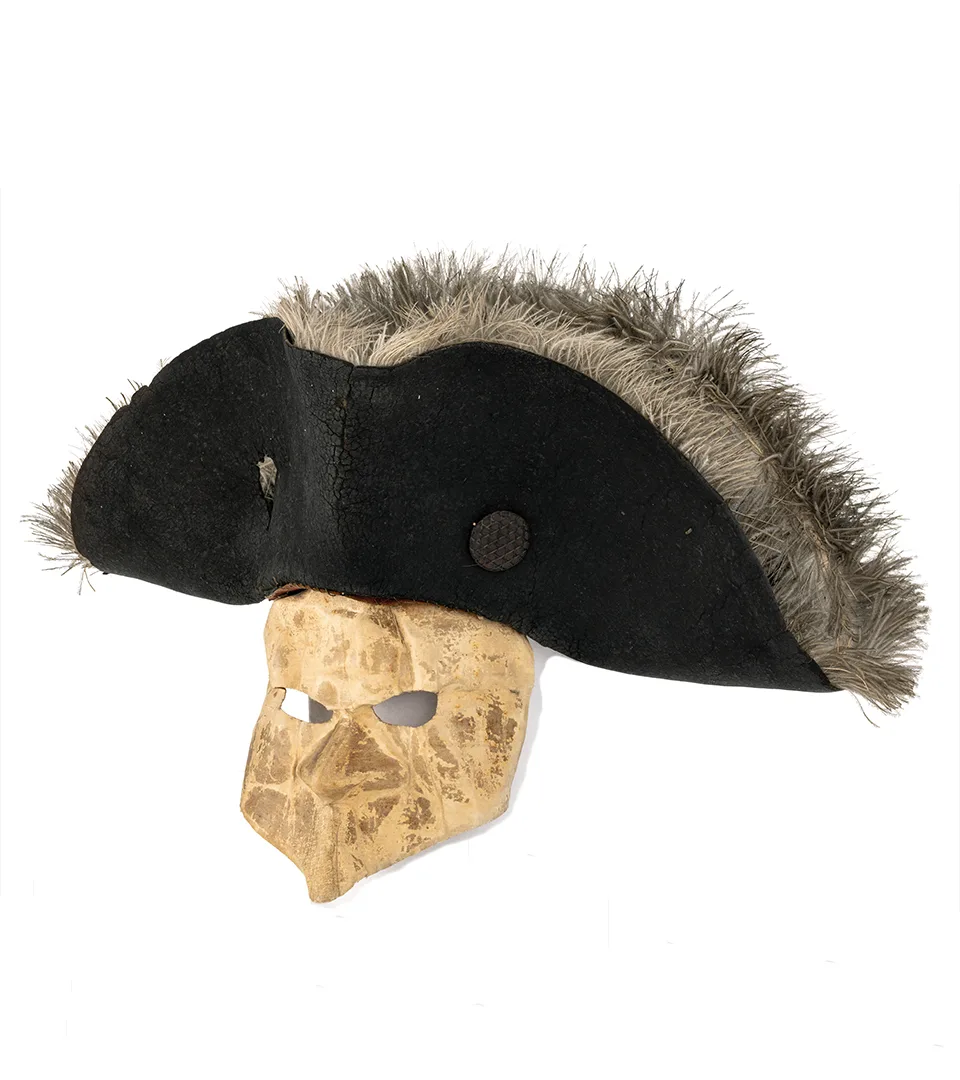
Mask and hat
The King’s wardrobe contained plenty of masquerade costumes. Among other things, he had twenty-six different masks. Gustav III also wore several masks with a matching hat. The hat he was wearing when he was shot is decorated with grey ostrich feathers. It may originally have had beaver skin on the outside.
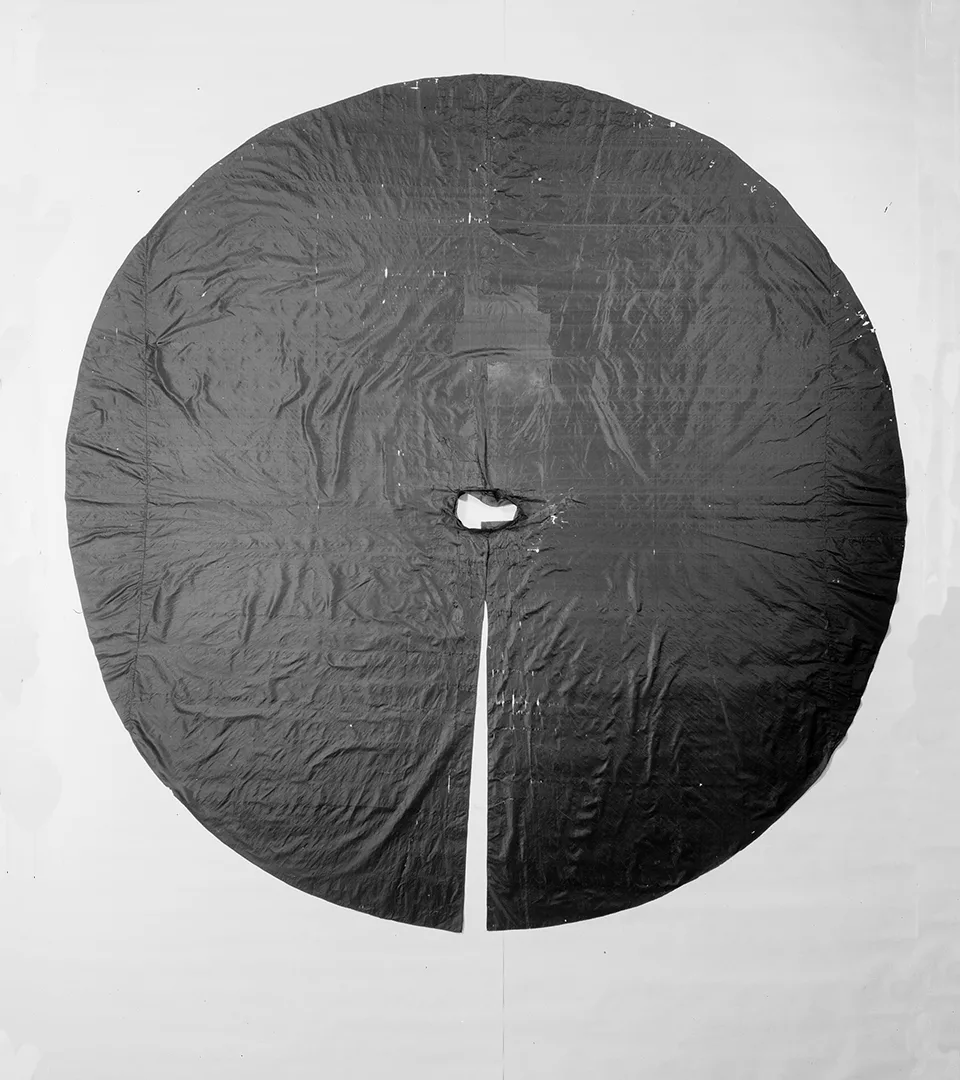
Cape
The King’s cape is of the domino type. Maybe the black cape worn by the King at the masquerade on 16 March is identical to a black domino cape made by court tailor Lindblad in January of the previous year. The silk in the original cape has become very fragile over the years. A copy of the cape was created in 1955. There are no bullet holes in the copy. This is the one currently on display at the Royal Armoury. The picture shows the bullet holes in the original cape.
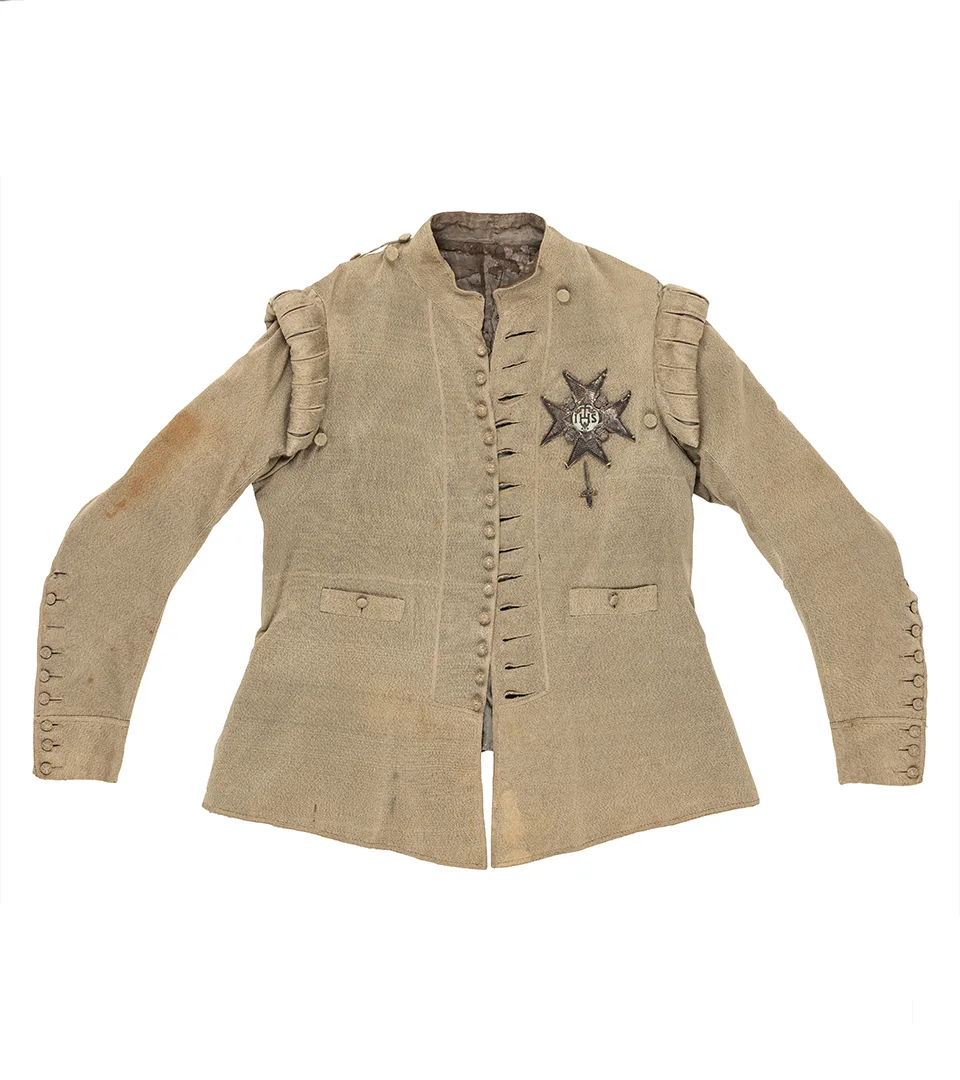
Jacket and belt
Gustav III’s jacket and belt are sewn from greyish silk tricot. The degree of wear indicates that the jacket had been worn many times before the masquerade. The jacket’s pockets were concealed under the broad belt. Before Gustav III went down to the masquerade, the King had received a warning letter from one of the conspirators behind the murder. Gustav III did not want the conspirators to think that he was afraid. He ignored the warning and tucked the letter into the jacket pocket under his belt, before heading down to the ball. It was a fateful decision.
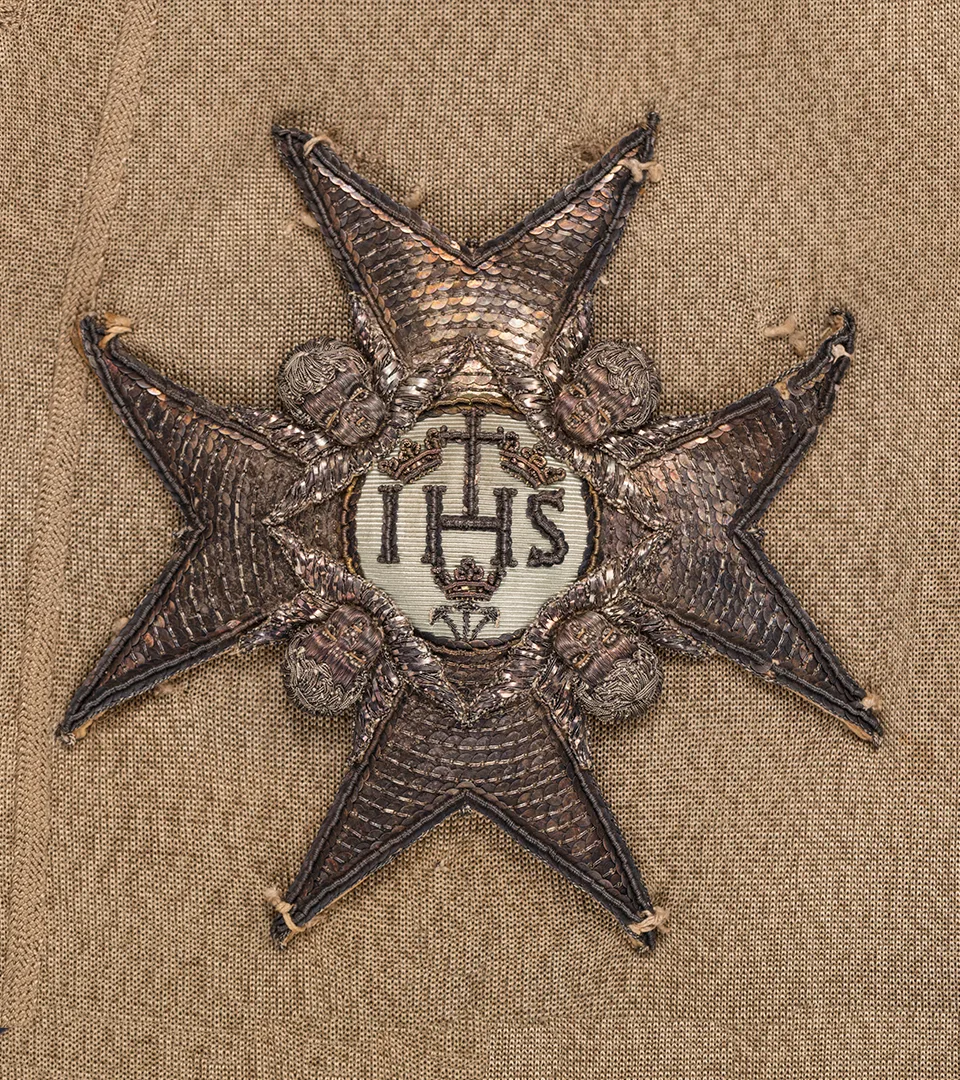
Star
The star of the Royal Order of the Seraphim is sewn onto the jacket. Below is the Order of the Sword’s award for knights, embroidered in silver. The cape left the King’s decorations on his jacket fully visible. According to the captain on duty, Count Gustaf Löwenhielm, who was also at the masquerade, this meant that Gustav III was “as recognisable as if he had been unmasked”.
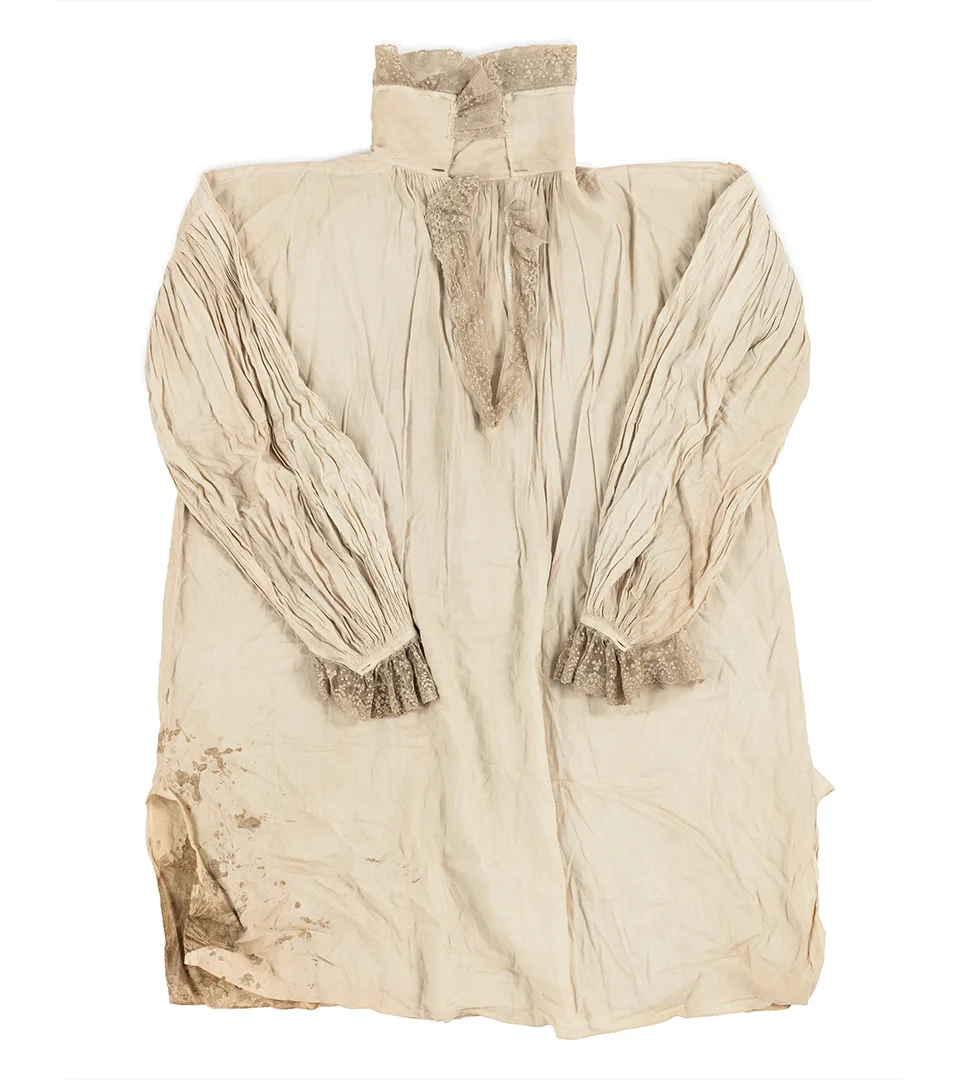
Shirt
The blood-stained shirt is made of linen fabric with a ruffle at the top. According to autopsy records, the gunshot had entered a few centimetres to the left of the King’s spine, near the left kidney, moving at an angle down to the left. The bullet holes in the garments that Gustav III was wearing, however, are just to the right of the centre of the back. The reason is that when Anckarström fired the shot, the King was walking forwards while turning back and to the right to talk to Captain Carl Fredrik Pollet.
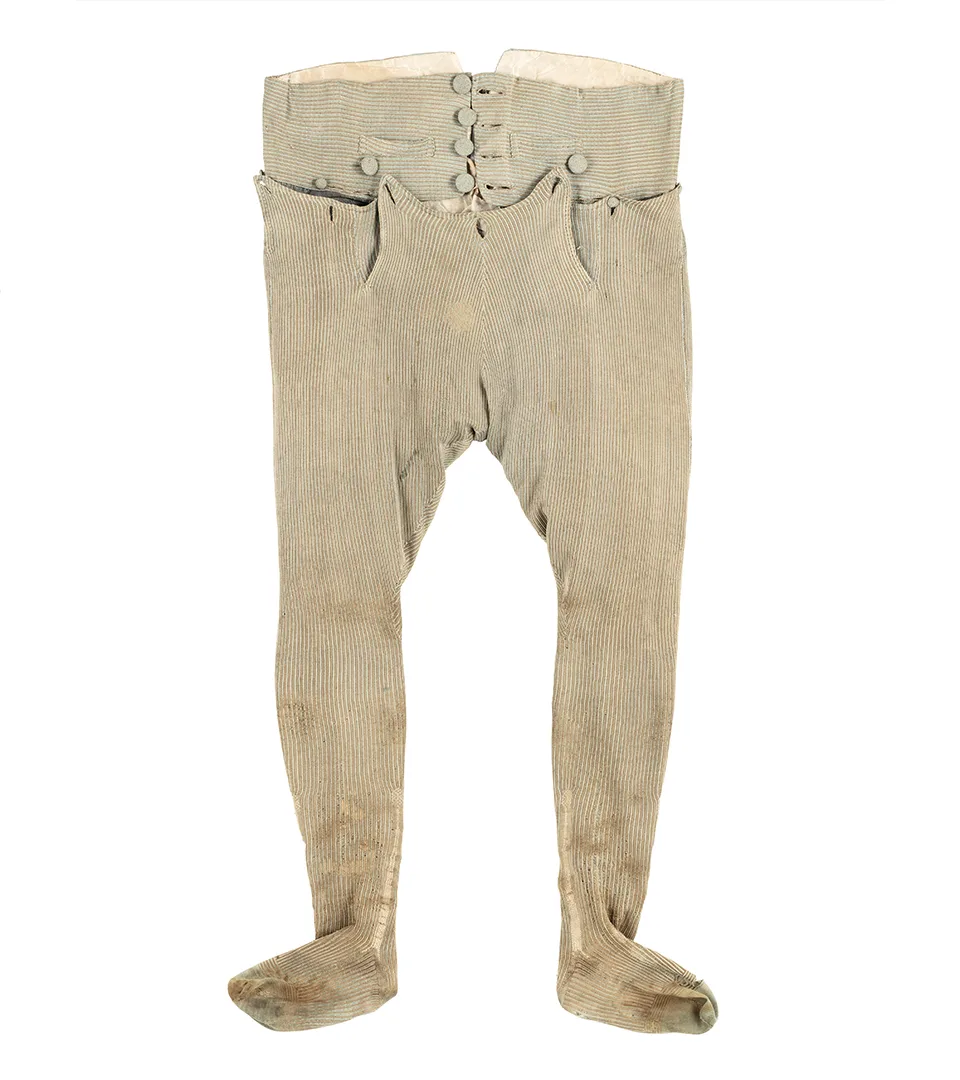
Pantaloons
The pantaloons are made of a very narrow striped fabric in silk tricot. The inside of the fabric reveals that the trousers originally had strong blue and gold colours. Silk tricot is a material that often appears in documents relating to Gustav III’s clothes. It was said that the King “loathed anything that was tight-fitting”. Tricot was a comfortable fabric that was easy to wear. He wore pantaloons with both his court dress and his military uniform.
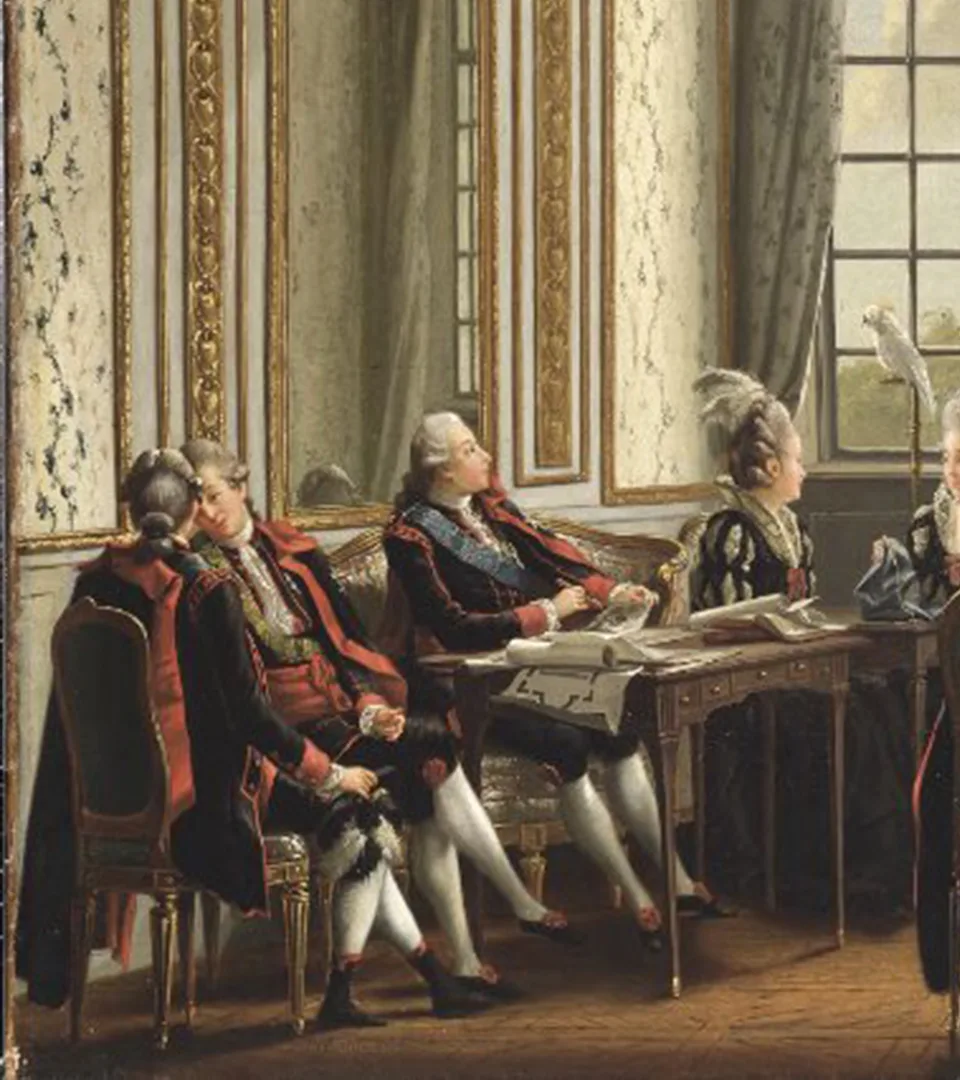
The National Dress
The masquerade jacket has the same cut as the Swedish national dress. The national dress was created at Gustav III’s initiative. A standard uniform produced in Sweden would benefit Swedish textile manufacturers. The uniform would also be a confirmation of the King’s revolution. It would also prevent the unnecessary consumption of luxuries. Another reason why the dress was introduced was that the King found the fashionable French costume to be too tight-fitting. It was not suitable for the Swedish climate.
Gustav III had drawn inspiration for the Swedish national dress from 17th-century fashion and theatrical costumes. The Swedish dress is similar to the clothes worn in Gustav II Adolf’s time. The new uniform was introduced at the Royal Order of the Seraphim’s festival day in 1778.

